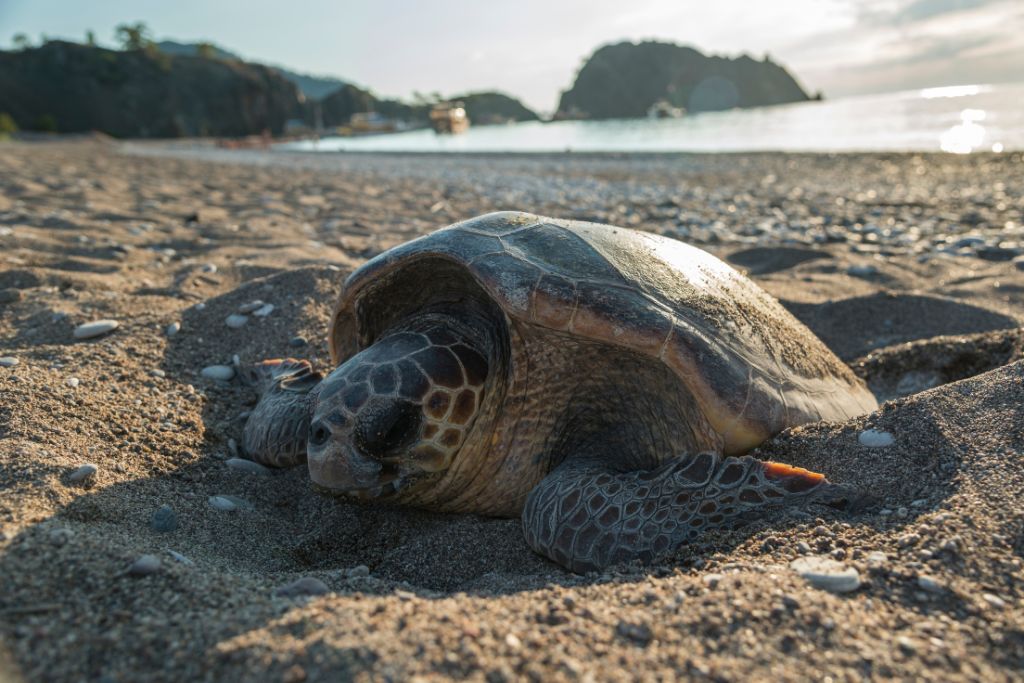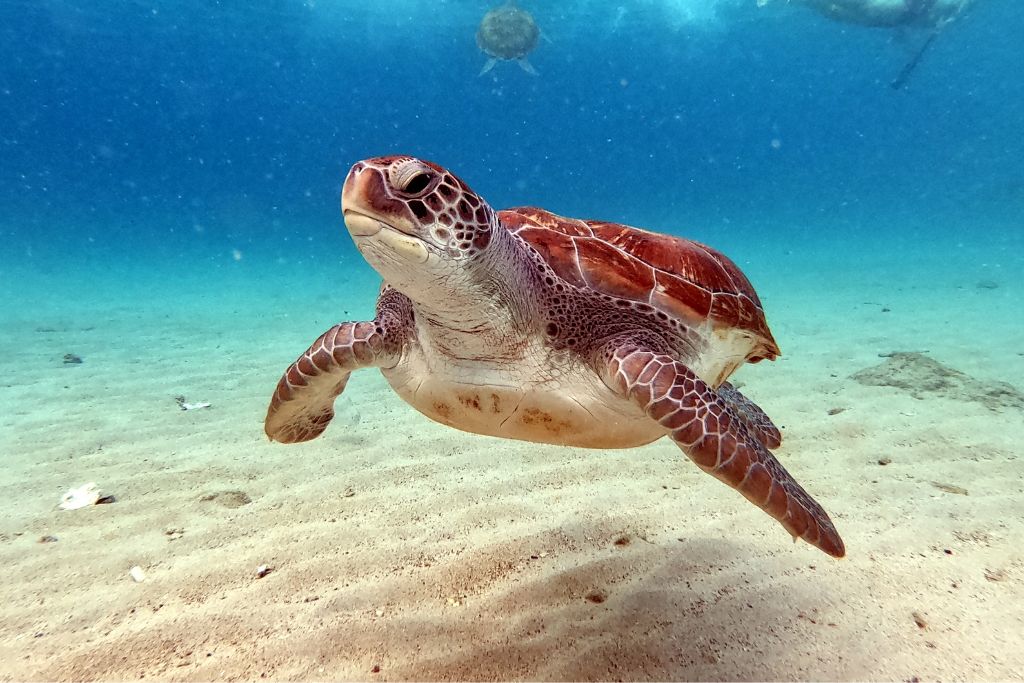Sea turtles are not only beautiful animals but they also show incredible perseverance and resilience amid a changing world and climates. Indeed, increasing global temperatures have important implications for sea turtle management and survival. In this article, we take a closer look at 7 interesting and mind-blowing facts about sea turtles.
—
7 Interesting Facts About Sea Turtles
1. Sea Turtles Can Live Up To 50 Years
While it is difficult to document the exact age of any species of sea turtles, scientists found that these creatures have similar life spans to humans. Marine species sometimes take two to three decades to mature and remain actively reproductive for another 10 years. Yet, the most consistent estimate shows that some sea turtles can live about 70 or even 80 years.
2. Sand Temperature Determines the Sex of Sea Turtles
The eggs of marine turtles cannot survive underwater; they lay their eggs in a nest they dig in the sand with their rear flippers. Turtles usually lay 100 to 125 eggs at a time, and nest multiple times over several months. The sand temperature is extremely important as it determines the hatchlings’ sex. Cooler incubation temperatures produce males while warmer sand often results in females. Fluctuations in temperatures during the two-month incubation period typically result in a mix of male and female turtles.
3. Sea Turtles Migrate Thousands of Miles in their Lifetimes
Both male and female sea turtles migrate long distances from high seas to nesting beaches during their lifetimes. The leatherback turtle, for example, can travel some 16,000 kilometres (10,000 miles) or even more across the Pacific Ocean each year. Loggerheads have been observed migrating from Japan to Baja, covering a distance of approximately 13,000 kilometers (8,000 miles). Other species such as green turtles and olive ridleys prefer to stay close to home and thus cover much shorter migration distances.
4. Sea Turtles Play A Crucial Role In Maintaining the Ecosystem of the World’s Oceans
By grazing on seagrass beds and sea sponges within coral reefs, sea turtles prevent overgrowth, which in turn improves current flows and nitrogen production while promoting healthy cultivation of flora and fauna. Some sea turtles also prey upon jellyfish and crustaceans, keeping their population numbers under control.
They also provide sustenance for other fish since barnacles, algae, and small organisms can cling to their shells, supporting a robust food web. These positive feedback loops and the recycling of nutrients are vital for marine habitats, and due to their migratory lifestyles, sea turtles can transport nitrogen, phosphorus, and potassium from the oceans to the beaches they nest upon.
You might also like: 12 of the Most Endangered Animals in the World
5. Sea Turtles Do Not Retract Into Their Shells and Are Thus More Vulnerable
The shell is part of a turtle’s spine, evolved from the ribs into an exterior bone covered in tough skin. Unlike other species, sea turtles cannot retract their paddle-shaped flippers and head into their shells. While their shells provide protection from attacks and abrasion, the fact that these species cannot fully hide in them makes them more vulnerable to predators such as tiger sharks and killer whales, as well as feral dogs, seabirds, and raccoons who typically eat eggs and hatchlings.
Sea turtles are also threatened by human activities. Beach development, for example, reduces suitable places where sea turtles can nest. Moreover, urban disturbances such as noise and light, can scare them away from their nesting sites. Trash is a huge problem as well, as sea turtles often die after ingesting or getting entangled in plastic packaging. Yet, the most severe threat derives from fishing activities. Since they cannot survive underwater for prolonged periods, they often drown as a result of being trapped in large commercial fishing nets.

6. There Are Only About 6.5 Million Sea Turtles Left in the Wild
While it is extremely difficult to calculate the exact number of sea turtles left in the wild, scientists estimate the population size to be around 6.5 million. The vast majority of sea turtle species are listed as endangered or critically endangered and the number of individuals remaining varies significantly. For example, there are possibly only 57,000 individuals of critically endangered hawksbill turtles left worldwide. As for Kemp’s ridley – which is classified as critically endangered due to the impacts of climate change and human activities – as few as 10,000 individuals are believed to be still alive.
7. Endangered Sea Turtles in Florida Thrived During the Covid-19 Pandemic
In the year prior to the pandemic, almost 400,000 sea turtle nests were recorded along Florida’s coastline during nesting season. Typically, only about one in every 1,000 hatchlings survive and fatalities on popular tourist beaches are even higher. In 2020, however, marine researchers in Florida found that Covid-19 restrictions that have kept humans and harmful waste off beaches have benefited endangered leatherback sea turtles in the state.
To learn more facts about sea turtles, check this out next: 6 Sea Turtle Species Endangered By Climate Change and Human Activity


















